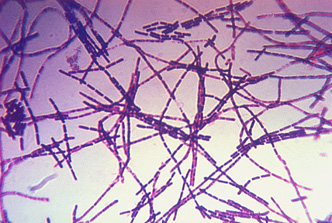Despite killing few people naturally, Anthrax, an infection caused by the bacterium Bacillus anthracis, has gained an infamous reputation for its use in bioweapons.
The bacterium produces small, discrete capsules that can lie dormant in the soil for decades. Unbeknownst to the inhabitants above, the spores can be weaponized and turned into an invisible, odorless aerosol. After settling inside the human lung, for example, it can cause a severe disease that, if not treated with antibiotics, kills 90 percent of those it infects.
This has been the research of Paul Keim, renowned Regents’ Professor and Cowden Endowed Chair of Microbiology at Northern Arizona University. He and his colleagues have been studying anthrax since the mid 1990’s.
Recently published in bioRxiv as a pre-print article and in press at mBio, NAU scientists, along with the Translational Genomics Research Institute, TGen, uncovered new information on what some refer to as the “biological Chernobyl.”
On April 2, 1979, anthrax spores were accidentally released from an underground bioweapons facility in the Soviet City of Sverdlovsk. The airborne bacterium spread throughout the city, taking the lives of animals and people alike. At least 66 people lost their lives, making it the deadliest human outbreak of inhalation anthrax to date.
Thirty-seven years ago, two tissue specimens were collected in an autopsy from victims of the accident. Despite the DNA being badly degraded, Keim and his team managed to piece together the sequence to be compared with hundreds of other anthrax isolates.
“We have been struggling with this particular DNA analysis for 20 years, but the genomic technology is now available for a comprehensive analysis of Soviet strain. This is likely the same strain that the Soviets used as the primary weapon in their biological weapons arsenal,” Keim said. “Now we know everything about its genetic makeup and can even infer details of their weapons production methods.”
NAU and TGen determined that the Soviet Sverdlovsk strain genome is consistent with a wild type strain from Russia that had no evidence of genetic manipulation during its industrial production.
The recent discoveries made at Northern Arizona University provide insight into the world’s largest biological weapons program and gives an extensive B. anthracis phylogenetic reference, which will be instrumental in future anthrax investigations.
Collaborators on the study include Paul Keim, Jason W. Sahl, Talima Pearson, David M. Wagner, Richard Okinaka, Crystal Hepp and Viacheslav Fofanov of NAU, and James M. Schupp, John D. Gillece, Hannah Heaton, Dawn Birdsell, Rámon Noseda, Antonio Fasanella and Alex Hoffmaster of TGen.



